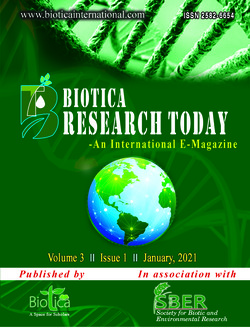
Antitranspirant: A Novel Emerging Approach to Combat Drought Stress in Maize (Zea mays L.)
Hardeep Singh*
Dept. of Agronomy, Punjab Agricultural University, Ludhiana, Punjab (141 004), India
Mandeep Singh
Dept. of Plant Breeding and Genetics, Punjab Agricultural University, Ludhiana, Punjab (141 004), India
Chandan Jaswal
Dept. of Plant Breeding and Genetics, Punjab Agricultural University, Ludhiana, Punjab (141 004), India
DOI: NIL
Keywords: Antitranspirants, Crop growth, Drought, Maize
Abstract
Drought stress occurring more frequently and severely because of the climatic change, and it threatens to food security of the world. Maize crop is intensely affected by biotic and abiotic stresses. Antitranspirants are the compounds that are applied to the leaves for reducing the water losses. Film forming type, growth retardant, reflecting type and stomatal closing type are the four categories of antitranspirants. Antitranspirants can; lessen water stress, enhance chlorophyll content, photosynthetic rate and improve the grain yield of maize. In this article we emphasize on the responses of maize to antitranspirants under drought conditions.
Downloads
not found
Reference
Dai, A., 2012. Increasing drought under global warming in observations and models. Nature Climate Change 3, 52–58.
Mphande, W., Kettlewell, P.S., Grove, I.G., Farrell, A.D., 2020. The potential of antitranspirants in drought management of arable crops: A review. Agricultural Water Management 236, 106143.
Ulameer, O.Q. A., Ahmed, S.A.A.H., 2018. Antitranspirant role in improving the morphological growth traits of maize plants subjected to water stress. Research on Crops 19, 593-603.
